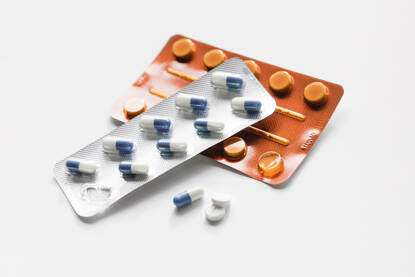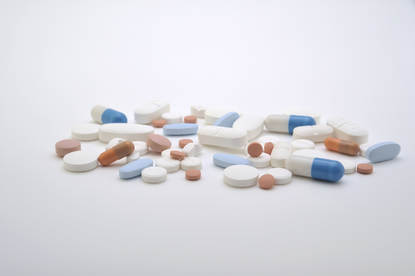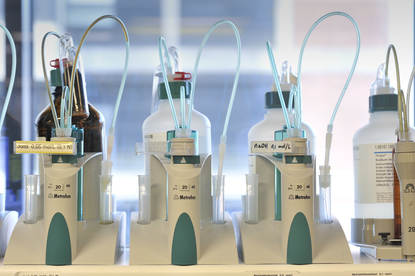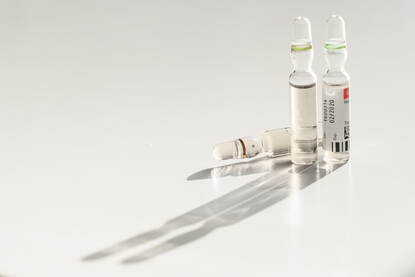In the past decades, signal detection has benefited from technological progress. More data on possible adverse drug reactions is available and interpretation of data has become more accurate and efficient. But we should never lose sight of what these signals are about: the patient’s perspective. During the MEB Science Day 2021, professor Eugène van Puijenbroek focuses on the nature of signals.
MEB Science Day 2021
Interested in 25 years of Pharmacovigilance? Don't forget to read the overview article about the MEB Science Day 2021!
Eugène van Puijenbroek works for the Netherlands Pharmacovigilance Centre Lareb since 1995, currently as the head of the centre’s Scientific Department. While at Lareb, the former general practitioner acquired his PhD from Utrecht University. In 2014 he became professor in Pharmacovigilance at the university of Groningen.
“My thesis and current research projects focus on signal detection and ways to extra information out of large data sets, using statistical methods”, explains Eugène, who is also skilled in clinical pharmacology.
Developments in reporting Adverse Drug Reactions
“We’ve seen a lot of changes – changes for the good. The standardisation of case reports, the nature and amount of adverse drug reactions (ADR’s) received, and the signals those ADR’s led to”, he continues. “How those signals are defined is determined by several factors. The amount of reports, the nature and whether or not information is new or deviates from existing information, for example. All these data are analysed and compared to other information, like the presence in literature and other pharmacovigilance databases. But the patient’s situation, pharmacological pathways and other reasons that may explain the events should always be taken into account and assessed.”
Unexpected adverse reactions
“Whether medicines are new or have been on the market for a while: sometimes new and unexpected adverse reactions appear that were not observed before.” Eugène brings to mind an example from a few years ago. “We’ve seen reports of onycholysis, detachment of nails, related to the use of the antibiotic doxycycline in relative high dosages of 100 mg twice daily. Phototoxic reactions had been seen before with this drug, that had been authorised for over thirty years. This particular adverse reaction however, was uncommon. The data was analysed and discussed in the PRAC (Pharmacovigilance Risk Assessment Committee ) meeting. This eventually led to an update of the Summary of Product Characteristics.”
A more recent example concerns flucloxacillin, a narrow spectrum penicillin, widely used both intravenously in hospitalized patients and orally to combat S. aureus infections. “A retrospective study in 2019 by an academic group from Nijmegen, showed patients with low blood levels of potassium. Reports we received at Lareb showed the same issue in patient cases. The consequences of this potential adverse drug reaction can be severe. It led to an analysis and a discussion in the PRAC, which eventually led to a variation of the marketing authorisation, with the product information advising physicians to measure blood potassium levels regularly when administering higher doses of flucloxacillin.”
Sensing different sources
Two examples, which for Eugène show what it is all about. “Sensing what is happening”, he explains. “Information from literature, patient cases, reports from healthcare professionals as well as patients: all these sources might trigger something.” And these sources differ from those used in the past. “The detection of signals of new adverse reactions has changed over the years. The European pharmacovigilance databank has grown and evolved. It nowadays also contains non-serious reports, in contrast to before, so we can also screen broader, something that had to be carried out before on a national level only. An impressive step forward, since that really helps in processing and detecting signals.”
In the past case reports in literature where also an important source of information. Doctors addressing issues in articles about adverse reactions they see in individual patients. However, scientific journals are more reluctant in publishing these case reports. Less publications on individual patient cases, as Eugène notices, is a consequence of what is happening in monitoring adverse reactions the last decades. “It has grown from individual cases to a more holistic approach. We see an increase in data. Large databases with lots of information, on which statistical analysis can take place.” But, he stresses, “the patient level story has always stayed important. Without that, the story just isn’t complete. Statistics is one thing, but interpretation is key. Without that, the decision to take action is impossible.”
“New techniques will arise and they will broaden our possibilities. But it will always remain important to look at the nature of the signals, their pharmacological background and the medical background of the patients involved. That is something that asks for more research: how do we connect clinical pharmacological pathways and statistical results? That is exactly what we are looking into at the moment in our studies.”
ADR latency times
Latency time of adverse reactions is a topic that needs more research, Eugène states. “The duration between the administration of medicines and the occurrence of adverse reactions is an interesting field. Some reactions show up relatively quickly and latency times are quite typical, like in an allergic response. As an example, anaphylactic reactions usually appear within a 30 minute time window. But many suspected adverse reactions take longer. Cancer for instance, can happen months or even longer after being exposed to a medicine. Can we apply this type of information in the detection of safety signals? And how do we keep track of those signals? That is a field that needs more work.”
Statistical analysis is not just correlating medicines with adverse reactions. “Every ADR report has its own story. What actually happened in the doctor’s office or hospital bed? What other factors were present, what was the patients situation? The complete story is important. That is something we need to look at more.

Big data opportunities
But isn’t big data and the possibility of linking electronic databases a way of creating endless opportunities for gathering new information, for instance on ADR’s with longer latency times? “Absolutely. It’s just that you need to find new information. What exactly do you want to analyse? Case reports and literature still are a valuable first step. Those are the foundations for generating new knowledge. And then databases and statistics come into play to analyse these relationships in more detail. They are indeed very helpful to strengthen an eventually prove the safety signals.”
In the past years, a new phenomenon has risen: patient reports. “The amount of reports received at Lareb and our international counterparts has risen in the past decades. That provides us with a new view on adverse reactions: the patient’s perspective.”
Pregabaline case – rather being dizzy than in pain
To illustrate the importance of that perspective, Van Puijenbroek refers to the extensive monitoring at Lareb of patients using pregabaline, a medicine for neuropathic pain. “A well-known adverse reactions of this substance, which occurs quite often, is dizziness. A reaction that really may affect the wellbeing of people. But we noticed that this group of patients amply accepted this adverse effect. Hardly anyone stopped using it. The patients valued the positive effect of the medicine – pain relief – much higher than the dizziness. It just shows to me that patient perspective is essential: yes, there are adverse reactions, but the balance between positive and negative effects can differ, depending on the patients situation. We should keep that perspective in mind as much as we can. Of course, we have to balance this too – we are here to monitor serious adverse reactions and help healthcare professionals in handling those. But we shouldn’t forget the more common situations and, again, personal situations.”
The opposite is true as well. “According to the patient information leaflet and product information, true adverse reactions are rare in radiopharmaceuticals. However, a questionnaire study by the radiofarmaca Apotheek Zwolle, including over a 1,000 persons, indicated that patiens who used these type of products experienced a number of events they attributed to adverse reactions. Knowledge of these differences in the perception of healthcare professionals and patients may eventually improve communication about the safety of the treatment.
Van Puijenbroek mentions that not only international collaboration is important, but also on a national level. “The collaboration between Lareb and the Medicines Evaluation Board is valuable. We work together with mutual respect and keep lines short. That really helps to improve the quality of signal detection and follow up. Steps of the process are clear and transparent, with a key role for assessors on both sides.”
Interested in Eugène's presentation? You can find the PDF here.
The nature of signals
In conclusion: Signal detection will surely benefit from more technical innovations in the years to come. “Connecting more and different databases to each other, linking statistical data to clinical pharmacological knowledge. In the future, developments like machine learning might improve analyses even more. But still, all those technology will eventually help us to focus more at what it is all about: the patient level. Besides assisting healthcare professionals in their task, which of course also remains essential. But focusing on that patient’s perspective, we can help improve medicines use in other ways, like medication acceptance and therapy adherence.”
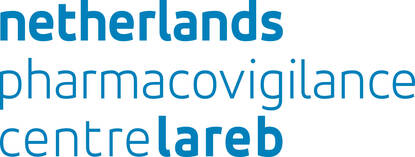
About Lareb
The Netherlands Pharmacovigilance Centre Lareb collected 34.000 reports of adverse drug reactions in 2019, of wich 14.000 reports are submitted directly to Lareb by healthcare professionals and patients and more than 20.000 were forwarded by the marketing authorisation holders. These reports are assessed and analysed, which may leads to safety signals about adverse drug reactions. These are reported to and reviewed by the Medicines Evaluation Board (MEB), supporting the MEB in its decisions in pharmacovigilance in the Netherlands and Europe.





